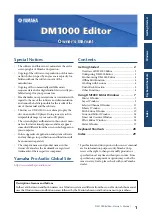
Installing Certificates in the Certificate System Database
257
NOTE
If the Certificate System instance's certificates and keys are stored on an HSM, then
specify the token name using the
-h
option.
For example:
certutil -A -n "ServerCert cert-example" -t u,u,u -d . -a -i /tmp/example.cert
For information about using the
certutil
command, see
http://www.mozilla.org/projects/security/pki/
nss/tools/certutil.html
.
11.4.1.3. About CA Certificate Chains
Any client or server software that supports certificates maintains a collection of trusted CA certificates
in its certificate database. These CA certificates determine which other certificates the software can
validate. In the simplest case, the software can validate only certificates issued by one of the CAs
for which it has a certificate. It is also possible for a trusted CA certificate to be part of a chain of CA
certificates, each issued by the CA above it in a certificate hierarchy.
The first certificate in the chain is processed in a context-specific manner, which varies according to
how it is being imported. For Mozilla Firefox, this handling depends upon the MIME content type used
on the object being downloaded. For Red Hat servers, it depends upon the options selected in the
server administration interface.
Subsequent certificates are all treated the same. If the certificates contain the SSL-CA bit in the
Netscape Certificate Type certificate extension and do not already exist in the local certificate
database, they are added as untrusted CAs. They can be used for certificate chain validation as long
as there is a trusted CA somewhere in the chain.
11.4.1.4. Importing Cross-Pair Certificates
Both cross-pair certificates can be imported into the Certificate System databases using the
certutil
tool or by selecting the
Cross-Pair Certificates
option from the Certificate Setup
Wizard. When both certificates have been imported into the database, a
crossCertificatePair
entry is formed and stored in the database. The original certificates are deleted once the
crossCertificatePair
entry is created.
The database can be searched for the
crossCertificatePair
entry using the Certificate System
LDAP search command.
ldapsearch -h
hostname
-p
CAInternalDBPort
-b "o=netscapeCertificateServer" -D "cn=Directory Manager" -w
DirectoryManagerPassword
"cn=crossCerts"
The Certificate Policies Extension profile default can be edited to specify cross-pair
certificates either through the Console or by setting the attribute value in the
CS.cfg
to
HTTP_PARAMS.certType==fbca
. This profile is then associated with an end-entity enrollment
page which has been customized to enroll for cross-pair certificates by providing the hidden value
certType==fbca
.
Содержание CERTIFICATE SYSTEM 7.3 - ADMINISTRATION
Страница 1: ...Red Hat Certificate System 7 3 Administration Guide Publication date May 2007 updated March 25 2010 ...
Страница 15: ...xv Index 525 ...
Страница 16: ...xvi ...
Страница 38: ...Chapter 1 Overview 16 Figure 1 4 Certificate System Architecture ...
Страница 82: ...Chapter 2 Installation and Configuration 60 rpm ev rhpki manage ...
Страница 154: ...132 ...
Страница 194: ...172 ...
Страница 238: ...216 ...
Страница 244: ...222 ...
Страница 246: ...224 ...
Страница 286: ...264 ...
Страница 292: ...270 ...
Страница 318: ...Chapter 13 Certificate Profiles 296 Parameter IssuerType_n IssuerName_n ...
Страница 321: ...Freshest CRL Extension Default 299 Parameter PointName_n PointIssuerName_n ...
Страница 371: ...Configuring Mappers 349 Figure 15 9 Selecting a New Mapper Type 6 Edit the mapper instance and click OK ...
Страница 398: ...376 ...
Страница 412: ...390 ...
Страница 472: ...450 ...
Страница 500: ...Appendix A Certificate and CRL Extensions 478 Parameter namen Table A 8 IssuerAlternativeName Configuration Parameters ...
Страница 506: ...484 ...
Страница 528: ...506 ...
Страница 546: ...524 ...
















































